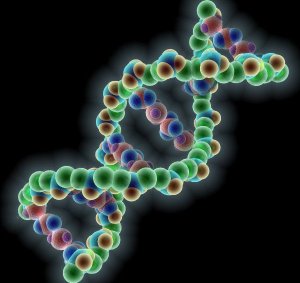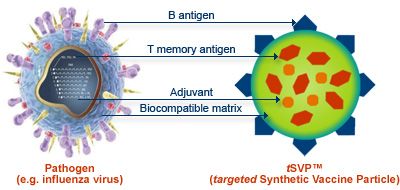
All iLive content is medically reviewed or fact checked to ensure as much factual accuracy as possible.
We have strict sourcing guidelines and only link to reputable media sites, academic research institutions and, whenever possible, medically peer reviewed studies. Note that the numbers in parentheses ([1], [2], etc.) are clickable links to these studies.
If you feel that any of our content is inaccurate, out-of-date, or otherwise questionable, please select it and press Ctrl + Enter.
A complex synthetic vaccine based on DNA molecules has been created
Medical expert of the article
Last reviewed: 01.07.2025

In search of ways to create safer and more effective vaccines, scientists at the Biodesign Institute at Arizona State University have turned to a promising field called DNA nanotechnology to create an entirely new type of synthetic vaccine.
In a study published recently in the journal Nano Letters, immunologist Yung Chang of the Institute of Bioengineering teamed up with colleagues including renowned DNA nanotechnologist Hao Yan to synthesize the world's first vaccine complex that can be safely and efficiently delivered to target sites by being placed on self-assembling, three-dimensional DNA nanostructures.
“When Hao suggested that we view DNA not as genetic material but as a working platform, I had the idea of applying this approach to immunology,” says Chang, an associate professor in the School of Life Sciences and a researcher in the Center for Infectious Diseases and Vaccines at the Institute for Bioengineering. “This would give us a great opportunity to use DNA carriers to create a synthetic vaccine.”
"The big question was: Is it safe? We wanted to create a group of molecules that could trigger a safe and powerful immune response in the body. Since Hao's team had been designing various DNA nanostructures for the past few years, we began collaborating to find potential medical applications for these structures."
The uniqueness of the method proposed by scientists from Arizona is that the antigen carrier is a DNA molecule.
The multidisciplinary research team also included University of Arizona biochemistry graduate student and first author of the paper Xiaowei Liu, professor Yang Xu, biochemistry lecturer Yan Liu, School of Biosciences student Craig Clifford and Tao Yu, a graduate student from Sichuan University in China.

Chang points out that the widespread adoption of vaccination has led to one of the most significant triumphs of public health. The art of creating vaccines relies on genetic engineering to construct virus-like particles from proteins that stimulate the immune system. These particles are similar in structure to real viruses but do not contain dangerous genetic components that cause disease.
An important advantage of DNA nanotechnology, which allows a biomolecule to be given a two- or three-dimensional shape, is the ability to create molecules using very precise methods that can perform functions typical of natural molecules in the body.
“We experimented with different sizes and shapes of DNA nanostructures and added biomolecules to them to see how the body would respond,” explains Yang, director of the Department of Chemistry and Biochemistry and a researcher at the Center for Single Molecule Biophysics at the Institute of Bioengineering. Through an approach the scientists call “biomimicry,” the vaccine complexes they tested approximate the size and shape of natural virus particles.
To demonstrate the viability of their concept, the researchers attached the immune-stimulating protein streptavidin (STV) and the immune-boosting drug CpG oligodeoxynucleotide to separate pyramidal branched DNA structures, which would eventually allow them to obtain a synthetic vaccine complex.
The team first needed to prove that the target cells could absorb the nanostructures. By attaching a light-emitting tag molecule to the nanostructure, the scientists were able to verify that the nanostructure found its proper place in the cell and remained stable for several hours – long enough to trigger an immune response.
Then, in experiments on mice, the scientists worked on delivering the vaccine “payload” to cells that are the first links in the body’s immune response chain, coordinating interactions between different components such as antigen-presenting cells, including macrophages, dendritic cells, and B cells. Once the nanostructures enter the cell, they are “analyzed” and “displayed” on the cell surface so that they can be recognized by T cells, the white blood cells that play a central role in triggering the body’s defense response. T cells, in turn, help B cells produce antibodies against foreign antigens.
To reliably test all variants, the researchers injected cells with both the full vaccine complex and the STV antigen alone, as well as the STV antigen mixed with a CpG enhancer.
After a 70-day period, the scientists found that mice immunized with the full vaccine complex demonstrated an immune response 9 times stronger than that induced by the CpG/STV mixture. The most noticeable reaction was initiated by the tetrahedral (pyramidal) structure. However, the immune response to the vaccine complex was recognized not only as specific (i.e., the body's reaction to a specific antigen used by the experimenters) and effective, but also as safe, which is confirmed by the absence of an immune reaction to the "empty" DNA (not carrying biomolecules) introduced into the cells.
"We were very pleased," Chang says. "It was wonderful to see results that we predicted. That doesn't happen very often in biology."
The future of the pharmaceutical industry lies in targeted drugs
Now the team is considering the potential of a new method to stimulate specific immune cells to trigger a response using a DNA platform. The new technology could be used to create vaccines consisting of several active drugs, as well as to change targets to regulate the immune response.
In addition, the new technology has the potential to develop new methods of targeted therapy, in particular the production of “targeted” drugs that are delivered to strictly designated areas of the body and therefore do not produce dangerous side effects.
Finally, although the DNA field is still in its infancy, the scientific work of Arizona researchers has significant practical implications for medicine, electronics and other fields.
Chang and Yang acknowledge that there is still much to be learned and optimized about their vaccine method, but the value of their discovery is undeniable. “With proof of concept in hand, we can now produce synthetic vaccines with an unlimited number of antigens,” Chang concludes.
Financial support for this research was provided by the US Department of Defense and the National Institutes of Health.
 [ 1 ], [ 2 ], [ 3 ], [ 4 ], [ 5 ], [ 6 ], [ 7 ], [ 8 ], [ 9 ]
[ 1 ], [ 2 ], [ 3 ], [ 4 ], [ 5 ], [ 6 ], [ 7 ], [ 8 ], [ 9 ]

